Private Residence (former Methodist Church)
Craigie
Built c.1865 Halmshaw & Sons, Birmingham.
Installed unknown date 'Cliffcote', Beach Road, Sandringham, residence of Dr Frank Shanassy.
Removed & erected 1924 Geo Fincham & Sons at residence of Dr Frank Shanassy, 3 Boyanda Road, Glen Iris.
Installed 1938 George Fincham & Sons Methodist Sunday School Hall, Summerhill Road, Glen Iris.
Installed 1976 residence of Neil Shilton, Mentone.
Installed present location 2006.
Restored 2016 Hargraves Pipe Organs.
1 manual, 4 speaking stops, pedal pulldowns, mechanical action.
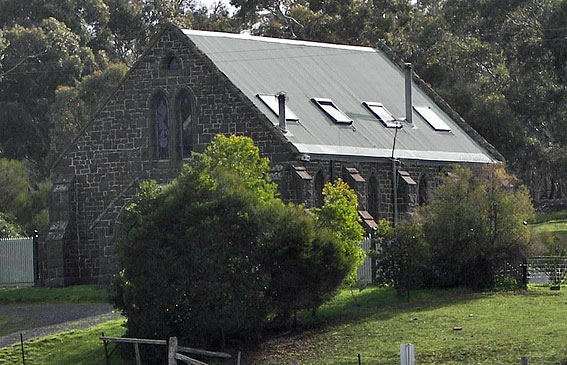
(Photograph by Bruce Fethers [1 July 2007])
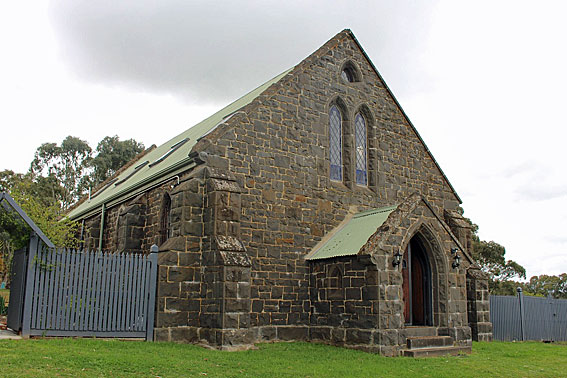
Private residence, Craigie – exterior view
(Photograph by Trevor Bunning [September 2017])
Historical and Technical Documentation by John Maidment
© OHTA, 2010 (upgraded February 2017)
The Methodist Church at Craigie was built in 1868. It is constructed from bluestone in the Gothic style. It has been converted for use as a private residence.
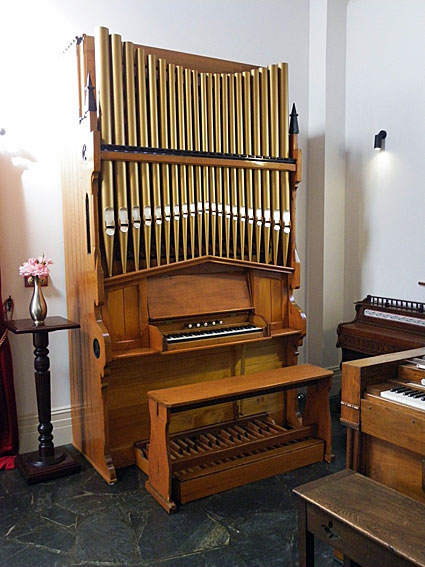
Private residence, Craigie – organ following restoration
(Photograph by Bruce Fethers [February 2017])
The organ is one of two examples of the work of the Birmingham firm of Halmshaw & Sons to be found in Australia, the other being at St Luke's Anglican Church, Scone, NSW. Its date would appear to be around 1865 when the firm was known by this name, as recorded on the nameplate. The Halmshaw firm was founded around 1855 by Joseph Halmshaw, born around 1805 and continued by his son Henry Halmshaw, born around 1834 under various names and is understood to have closed in 1912.1 It also built several organs in New Zealand including the instrument at the Cathedral of the Blessed Sacrament, Christchurch, badly damaged in the 2011 earthquakes.

'Douglas Organ' from Scudamore Organs [1858]
It is not known when the organ arrived in Australia. Given its diminutive size and sound, it is uncertain whether it may have been built for a church. The Gothic casework, however, closely resembles the designs for small organs published in Scudamore Organs, by the Revd John Baron, published in 1858. These were for small organs of minimal depth, located against a side wall of a chancel. The side profile of the 'Douglas Organ' (plate 8) has resemblances to the Halmshaw.2
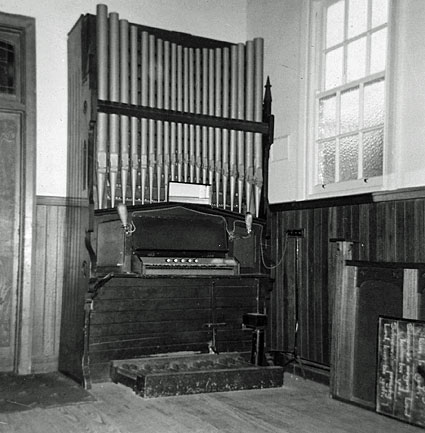
Methodist Church Hall, Summerhill Road, Glen Iris
(Photograph by W.G.S. Smith [c.1970])
The first known location of the Halmshaw organ was at 'Cliffcote', the residence of Dr Frank Shanassy, a dentist, of Beach Road Sandringham. It was moved in 1924 by George Fincham & Sons from there to his new residence at 3 Boyanda Road, Glen Iris (the house still exists). In 1938, after his death, the organ was sold to the Methodist Sunday School Hall, Summerhill Road, Glen Iris where it was installed by George Fincham & Sons.3 In 1976 it was sold to Neil Shilton, who installed it in his home in Mentone. In 2006, it was moved to its present location.
A comprehensive restoration was undertaken in 2016 by Hargraves Pipe Organs Pty Ltd. The work included:
• Restoration of the slider windchest to eradicate splits in the table and make it wind tight;
• Restoration of the mechanical key and stop actions;
• Restoration of the metal pipework, which has retained cone tuning;
• Restoration of the casework and reconstruction of the knee panel;
• Repainting of the facade pipes;
• Restoration of the swell box to its full height, connection of the swell shutters and provision of a new swell pedal;
• Restoration of the double-rise reservoir and installation of a small Ventus blower beneath the wind reservoir where the bellows feeders had been located.
The instrument remains in a remarkable state of originality. The pipework, mainly of metal apart from the stopped bass, of wood, retains its cone tuning, pitch and voicing. The pine casework, which had been covered in brown varnish, had earlier been cleaned back by Neil Shilton, and the gold paint removed from the facade pipes, which are mainly non-speaking apart from the two longest on either side. The overall sound is exquisite, like the other Halmshaw organs in Scone and New Zealand.
MANUAL |
[8] [8] [8] [8] [4] |
tenor C CC-BB, wood tenor C, metal with wooden stoppers tenor C |
Compass: 56/30
Mechanical key and stop action
All pipework enclosed except for 1-4 of Harmonic Flute
Lever swell pedal4
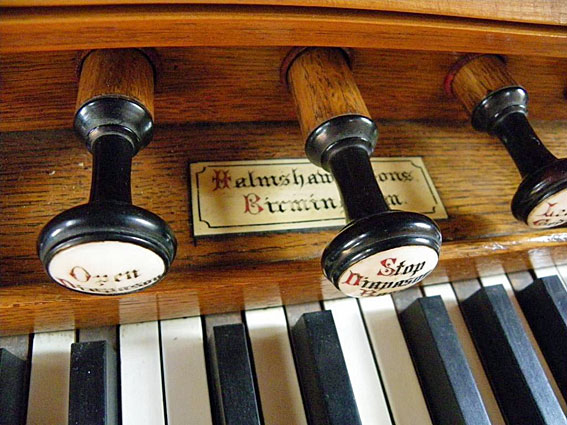
Private residence, Craigie – view of drawstops and nameplate
(Photograph by Bruce Fethers [31 December 2009])
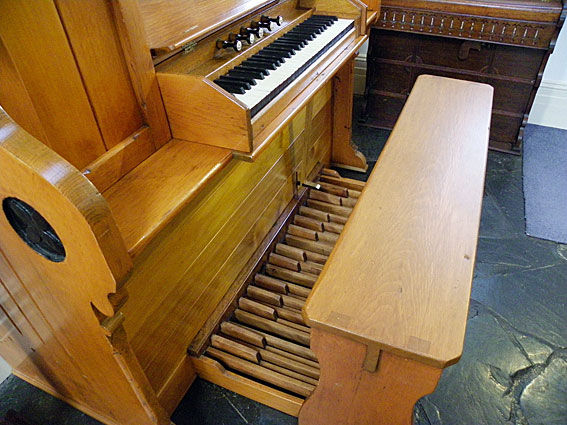
Private residence, Craigie – diagonal view of console after restoration
(Photograph by Bruce Fethers [February 2017])
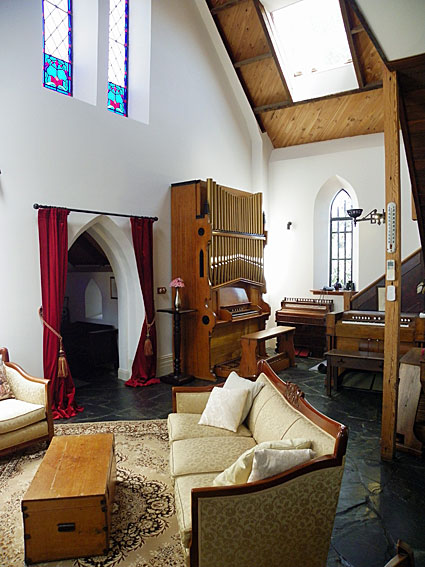
Private residence, Craigie – view of organ across room after restoration
(Photograph by Bruce Fethers [February 2017])
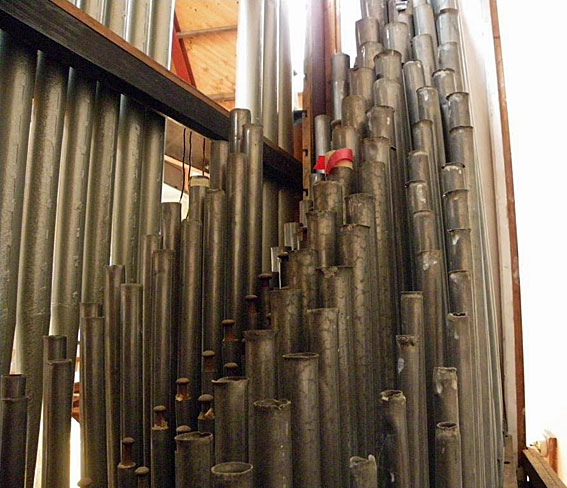
Private residence, Craigie – unrestored pipework before restoration
(Photograph by Bruce Fethers [3 January 2010])
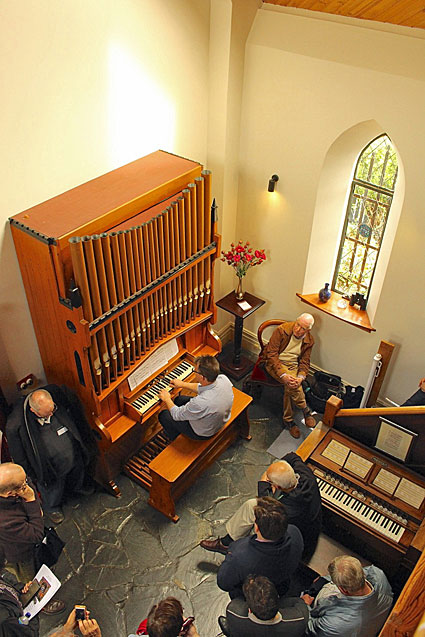
Private residence, Craigie – view of organ across room after restoration
(Photograph by Trevor Bunning [September 2017])
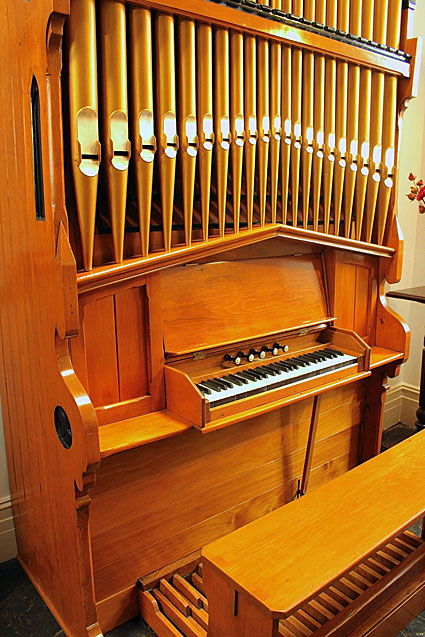
Private residence, Craigie – view of organ
(Photograph by Trevor Bunning [September 2017])
1 The Freeman-Edmonds Directory of British Organ Builders (Oxford: Positif Press, 2002) vols 1 & 2
2 The Rev. John Baron, M.A. Scudamore Organs: or practical hints respecting organs for village churches and small chancels on improved principles. London: Bell and Daldy, 1858.
3 George Fincham & Sons letter books (State Library of Victoria)
4 Details noted by John Maidment 1966, 2016